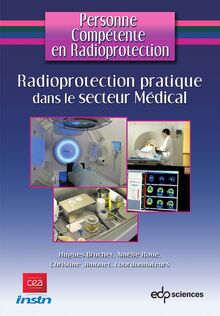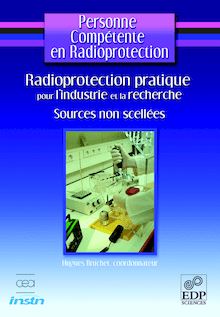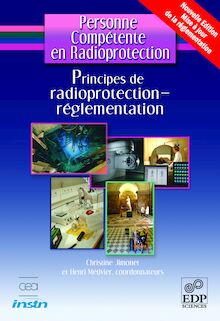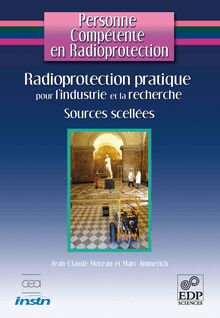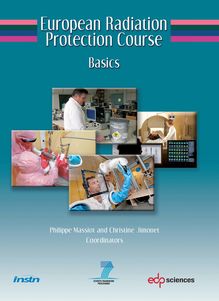-
 Univers
Univers
-
 Ebooks
Ebooks
-
 Livres audio
Livres audio
-
 Presse
Presse
-
 Podcasts
Podcasts
-
 BD
BD
-
 Documents
Documents
-
- Cours
- Révisions
- Ressources pédagogiques
- Sciences de l’éducation
- Manuels scolaires
- Langues
- Travaux de classe
- Annales de BEP
- Etudes supérieures
- Maternelle et primaire
- Fiches de lecture
- Orientation scolaire
- Méthodologie
- Corrigés de devoir
- Annales d’examens et concours
- Annales du bac
- Annales du brevet
- Rapports de stage
La lecture à portée de main
Découvre YouScribe en t'inscrivant gratuitement
Je m'inscrisEuropean Radiation Protection Course , livre ebook
Découvre YouScribe en t'inscrivant gratuitement
Je m'inscrisEn savoir plus
En savoir plus

Description
Radiation protection is a major challenge in the industrial applications of ionising radiation, both nuclear and non-nuclear, as well as in other areas such as the medical and research domains. The overall objective of this textbook is to participate to the development of European high-quality scheme and good practices for education and training in radiation protection (RP), coming from the new Council Directive 2013/59/Euratom laying down basic safety standards for protection against the dangers arising from exposure to ionising radiation.
These ERPTS (European Radiation Protection Training Scheme) reflects the needs of the Radiation Protection Expert (RPE) and the Radiation Protection Officer (RPO), specifically with respect to the Directive 2013/59/Euratom in all sectors where ionising radiation are applied.
To reflect the RPE training scheme, six chapters have been developed in this textbook:
- Radioactivity and nuclear physics
- Interaction of ionising radiation with matter
- Dosimetry
- Biological effects of ionising radiation
- Detection and measurement of ionising radiation
- Uses of sources of ionising radiation
The result is a homogeneous textbook, dealing with the ERPTS learning outcomes suggested by ENETRAPII project (European Network on Education and Training in RAdiological Protection II) from the 7th Framework Programme.
The production of this first module “basics” training material, in the form of a textbook as learning tool, will contribute to facilitate mutual recognition and enhanced mobility of these professionals across the European Union.
Sujets
Informations
| Publié par | EDP Sciences |
| Date de parution | 05 mai 2014 |
| Nombre de lectures | 0 |
| EAN13 | 9782759816361 |
| Langue | English |
| Poids de l'ouvrage | 18 Mo |
Informations légales : prix de location à la page 0,8450€. Cette information est donnée uniquement à titre indicatif conformément à la législation en vigueur.
Extrait
-
 Univers
Univers
-
 Ebooks
Ebooks
-
 Livres audio
Livres audio
-
 Presse
Presse
-
 Podcasts
Podcasts
-
 BD
BD
-
 Documents
Documents
-
Jeunesse
-
Littérature
-
Ressources professionnelles
-
Santé et bien-être
-
Savoirs
-
Education
-
Loisirs et hobbies
-
Art, musique et cinéma
-
Actualité et débat de société
-
Jeunesse
-
Littérature
-
Ressources professionnelles
-
Santé et bien-être
-
Savoirs
-
Education
-
Loisirs et hobbies
-
Art, musique et cinéma
-
Actualité et débat de société
-
Actualités
-
Lifestyle
-
Presse jeunesse
-
Presse professionnelle
-
Pratique
-
Presse sportive
-
Presse internationale
-
Culture & Médias
-
Action et Aventures
-
Science-fiction et Fantasy
-
Société
-
Jeunesse
-
Littérature
-
Ressources professionnelles
-
Santé et bien-être
-
Savoirs
-
Education
-
Loisirs et hobbies
-
Art, musique et cinéma
-
Actualité et débat de société
- Cours
- Révisions
- Ressources pédagogiques
- Sciences de l’éducation
- Manuels scolaires
- Langues
- Travaux de classe
- Annales de BEP
- Etudes supérieures
- Maternelle et primaire
- Fiches de lecture
- Orientation scolaire
- Méthodologie
- Corrigés de devoir
- Annales d’examens et concours
- Annales du bac
- Annales du brevet
- Rapports de stage
